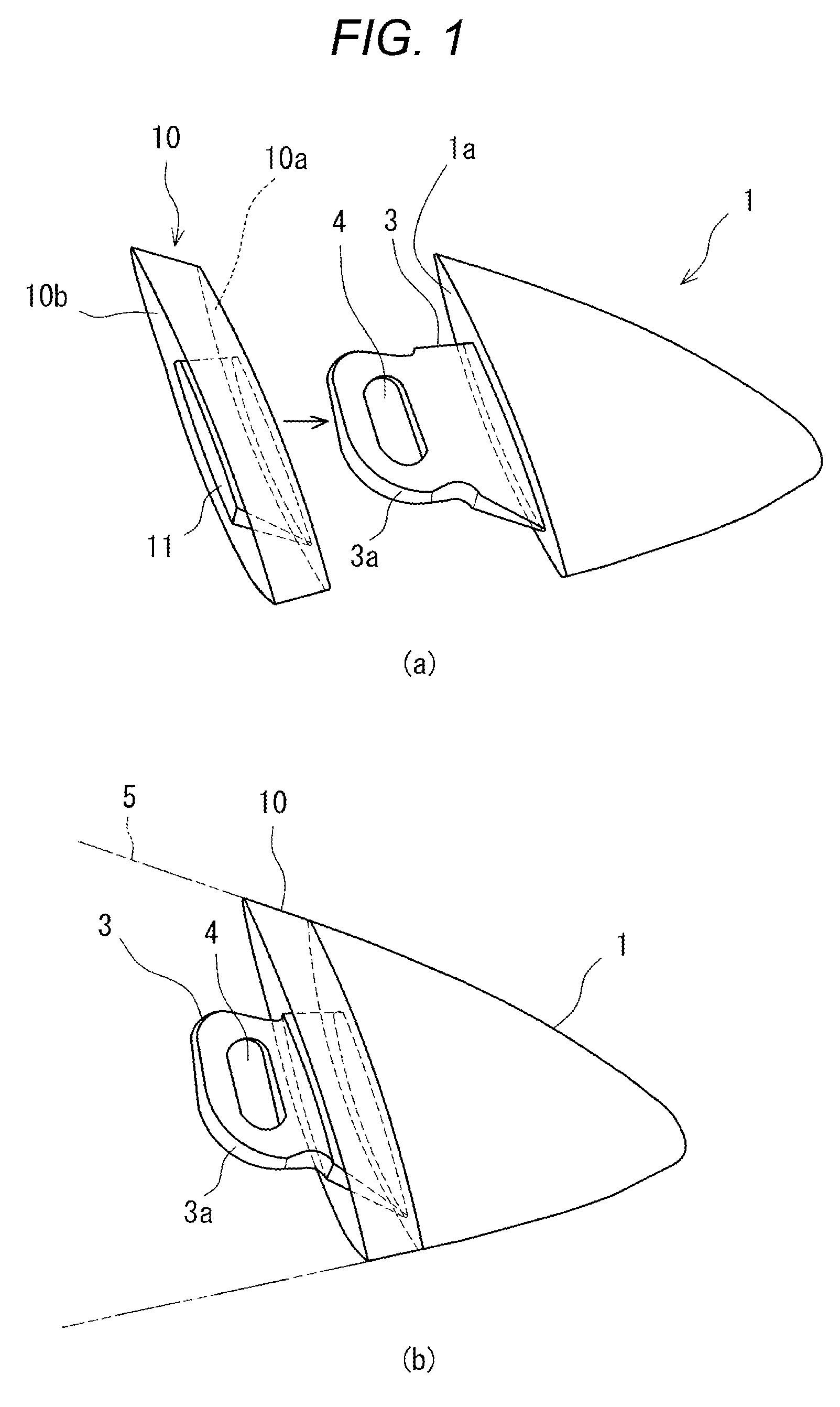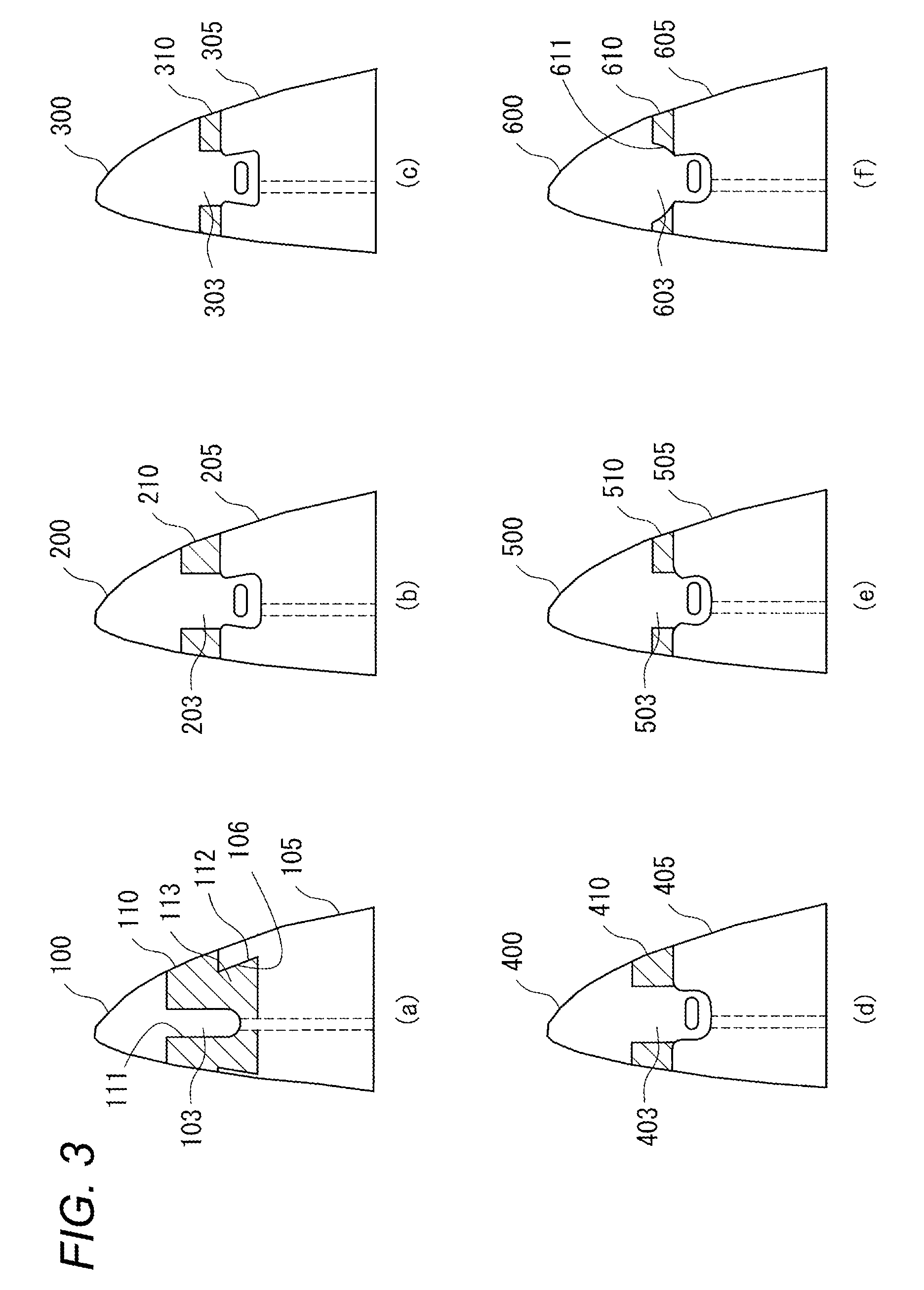Lightning protection structure of blade for wind power generation
a technology of blade protection and wind power generation, which is applied in the installation of lighting conductors, machines/engines, mechanical equipment, etc., can solve the problems of increasing the damage of the lightning receptor around the lightning receptor and the lightning itself, and the damage of the lightning receptor may not be restrained, so as to improve the function of arresting lightning, improve the effect of aerodynamic characteristics and reliably attach the lightning receptor to the blad
- Summary
- Abstract
- Description
- Claims
- Application Information
AI Technical Summary
Benefits of technology
Problems solved by technology
Method used
Image
Examples
embodiment 1
[0054]Next, the lightning protection structure including the lightning receptor 1 made of aluminum and the ceramic member 10 according to the embodiment of the present invention illustrated in FIG. 1 and a lightning protection structure including a lightning receptor 20, with no ceramic member is interposed, according to the related art illustrated in FIG. 6 were attached to an FRP material imitated as a blade. Then, those lightning protection structures were subjected to 2-D electric field analysis using simulation to predict a position struck by the lightning.
[0055]Incidentally, in the analysis, an analysis software MARC2007R1 (a product manufactured by MSC Software Corporation) was utilized, and a point charge was placed at a distance of 1 m from the tip end portion of the blade. Letting a position immediately above the tip end portion of the blade to be 0°, point charges were placed at positions of ±30°, ±60°, and ±90°, and positions of 200 mm and 500 mm lowered immediately belo...
PUM
 Login to View More
Login to View More Abstract
Description
Claims
Application Information
 Login to View More
Login to View More - R&D
- Intellectual Property
- Life Sciences
- Materials
- Tech Scout
- Unparalleled Data Quality
- Higher Quality Content
- 60% Fewer Hallucinations
Browse by: Latest US Patents, China's latest patents, Technical Efficacy Thesaurus, Application Domain, Technology Topic, Popular Technical Reports.
© 2025 PatSnap. All rights reserved.Legal|Privacy policy|Modern Slavery Act Transparency Statement|Sitemap|About US| Contact US: help@patsnap.com



